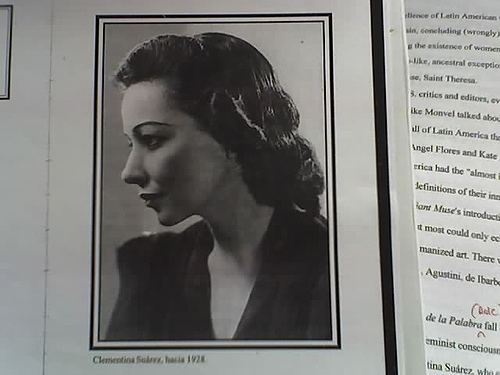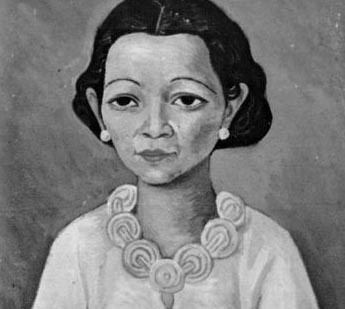Nationality Honduran Children 2 | Occupation Poet, Writer | |
 | ||
Born 12 May 1902 Juticalpa, Honduras Died 1991, Tegucigalpa, Honduras Similar Roberto Sosa, Froylán Turcios, Alfonso Guillén Zelaya, Juan Ramón Molina, Lucila Gamero de Medina | ||
Utv editorial de la unah present libro clementina su rez poes a completa
Clementina Suárez (12 May 1902 – 1991) was an early Honduran writer, who broke social norms. She was the first woman to publish a book of poetry in Honduras and she is now regarded as its premier female poet.
Contents

Life

Suárez was a Bohemian whom loved to frequent cafes. Since she was little she got used to getting whatever she wanted and doing whatever she felt like. It didn't bother her that she was the only woman who frequented the tobacco shop "Mamá llaca" in the neighborhood La Ronda de Tegucigalpa.
She was a woman who loved the company of men in all forms, she loved being surrounded by talent, energy, and ideas. Truthfully Clementina's education was that of the people. Clementina was called the "New Woman" in Honduras.
Suárez was born in Juticalpa in 1902 to Amelia Zelaya Bustillo and Luis Suarez. She attended public school until fifth grade. In 1923 her father died, and Suárez left her rural family home without financial support or the support of her mother. Her first destinations were towns where she had relatives who provided a place for her to stay. She lived and worked various jobs in Trujillo, La Ceiba, San Pedro, Tela, and finally Tegucigulpa, all while writing. She eventually moved in with Antonia Rosa, also a writer. They had two daughters together, however, never married. Shortly after the birth of her second daughter, the poet, now 27, left Rosa, and married Guillermo Bustillo Reina, but the marriage ended after less than a year.
She worked as a waitress to feed herself and her two children, but she still wrote. She wore shorts and a bikini, celebrating her body not only in life but also in her poetry. She was seen as a free woman, independent and outspoken. Tegucigalpa was shocked because of her modern way of behaving and breaking established rules traditionally attached to "feminine" behaviour. She was also the first woman to publish a book in Honduras.
In December 1991 delinquents were merciless to her. The poet Roberto Sosa did her final interview.
Her first two published poems reflected her independent character. She walked the streets of the capital dressed as a bellboy to sell her work when she published six issues of a journal named Mujer (woman). In 1936–7 she was in Cuba seeing its resistance against fascism. This observation and the news of the Spanish Civil War is thought to have expanded Suárez's horizons.
She founded the Gallery of Central American Art while in political exile in Mexico in the 1940s. In the 1950s she created an artist's gallery El Rancho del Artista in El Salvador which was open to the public as well as serving as a community. She returned to her home country in 1958.
The National Honduras University published an anthology of her poetry and the following year, 1970, she was given a national award for her work in literature. Suárez mixed with the literati and she knew the Nobel Prize winners Pablo Neruda and Miguel Angel Asturias. She died in Tegucigalpa in 1991.
Legacy
Suárez was honoured with a Honduran stamp in 1999. She has been said to be her country's premier woman poet. She was also said to be the first woman in Honduras to wear shorts and lipstick; which together with appearing naked reading communist revolutionary poetry, added to her infamous reputation. There is a book and a film about her life and there are said to be portraits of her by the Mexican painter Diego Rivera, the Costa Rican painter Francisco Amighetti and Camilo Minero from El Salvador.
